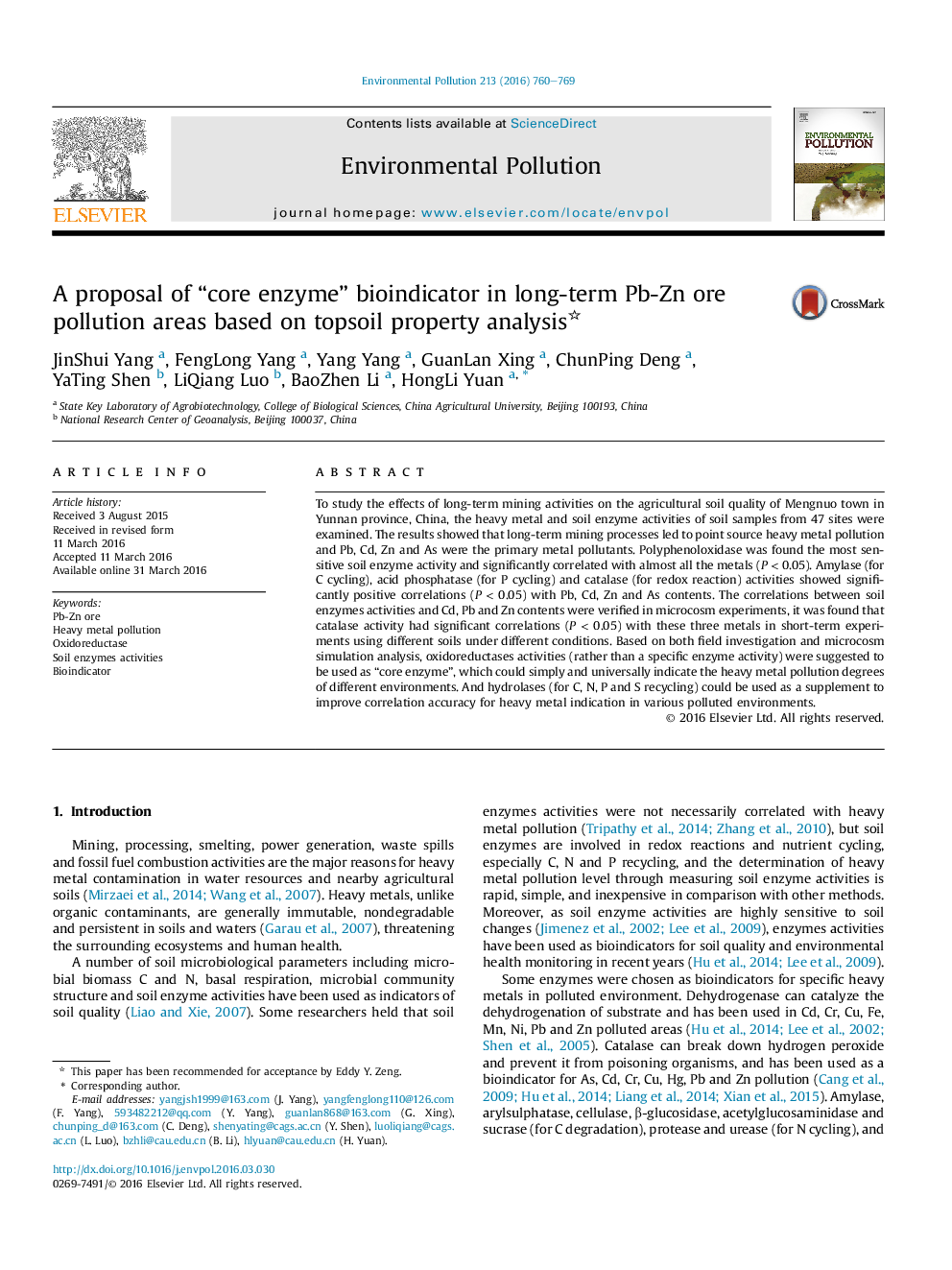| Article ID | Journal | Published Year | Pages | File Type |
|---|---|---|---|---|
| 6315003 | Environmental Pollution | 2016 | 10 Pages |
â¢Long-term Pb-Zn ore mining led to a point source heavy metal pollution.â¢Pb, Cd, Zn and As were the primary pollution metals in this region.â¢Polyphenoloxidase was found to be a good mining contamination bioindicator.â¢Oxidoreductase was proposed as enzyme indicators for soil heavy metal pollution.
To study the effects of long-term mining activities on the agricultural soil quality of Mengnuo town in Yunnan province, China, the heavy metal and soil enzyme activities of soil samples from 47 sites were examined. The results showed that long-term mining processes led to point source heavy metal pollution and Pb, Cd, Zn and As were the primary metal pollutants. Polyphenoloxidase was found the most sensitive soil enzyme activity and significantly correlated with almost all the metals (PÂ <Â 0.05). Amylase (for C cycling), acid phosphatase (for P cycling) and catalase (for redox reaction) activities showed significantly positive correlations (PÂ <Â 0.05) with Pb, Cd, Zn and As contents. The correlations between soil enzymes activities and Cd, Pb and Zn contents were verified in microcosm experiments, it was found that catalase activity had significant correlations (PÂ <Â 0.05) with these three metals in short-term experiments using different soils under different conditions. Based on both field investigation and microcosm simulation analysis, oxidoreductases activities (rather than a specific enzyme activity) were suggested to be used as “core enzyme”, which could simply and universally indicate the heavy metal pollution degrees of different environments. And hydrolases (for C, N, P and S recycling) could be used as a supplement to improve correlation accuracy for heavy metal indication in various polluted environments.
